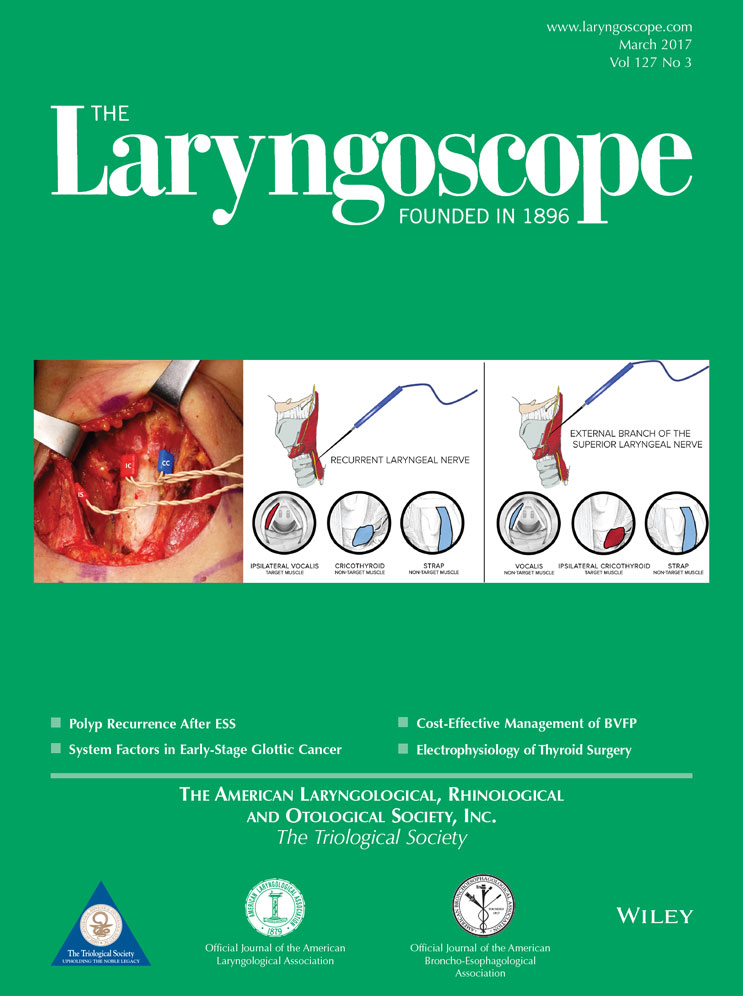Carotid artery and lower cranial nerve exposure with increasing surgical complexity to the parapharyngeal space
Part of the content of this article (Abstract number: 493) was a poster presentation at the Triological Society Annual Meeting at Combined Otolaryngology Spring Meeting, Boston, Massachusetts, U.S.A., April 24–25 2015.
The authors have no funding, financial relationships, or conflicts of interest to disclose.
Abstract
Objectives/Hypothesis
To investigate the extent of carotid artery exposure attained, including the identification of the external carotid branches and lower cranial nerves in five sequential external approaches to the parapharyngeal space, and to provide an anatomical algorithm.
Study Design
Anatomical study.
Methods
Six latex-injected adult cadaver heads were dissected in five consecutive approaches: transcervical approach with submandibular gland removal, posterior extension of the transcervical approach, transcervical approach with parotidectomy, parotidectomy with lateral mandibulotomy, and parotidectomy with mandibulectomy. The degree of carotid artery exposure attained, external carotid branches, and lower cranial nerves visualized was documented.
Results
The transcervical approach exposed 1.5 cm (Standard Deviation (SD) 0.5) of internal carotid artery (ICA) and 1.25 cm (SD 0.25) of external carotid artery (ECA). The superior thyroid and facial arteries and cranial nerve XII and XI were identified. The posterior extension exposed 2.9 cm (SD 0.7) of ICA and 2.7 cm (SD 1.0) of ECA. Occipital and ascending pharyngeal arteries were visualized. The transparotid approach exposed 4.0 cm (SD 1.1) of ICA and 3.98 cm (SD 1.8) of ECA. Lateral mandibulotomy exposed the internal maxillary artery, cranial nerve X, the sympathetic trunk, and 4.6 cm (SD 2.4) of ICA. Mandibulectomy allowed for complete ECA exposure, cranial nerve IX, lingual nerve, and 6.9 cm (SD 1.3) of ICA.
Conclusion
Approaches for the parapharyngeal space must be based on anatomic and biological patient factors. This study provides a guide for the skull base surgeon for an extended approach based on the desired anatomic exposure.
Level of Evidence
N/A. Laryngoscope, 127:585–591, 2017




